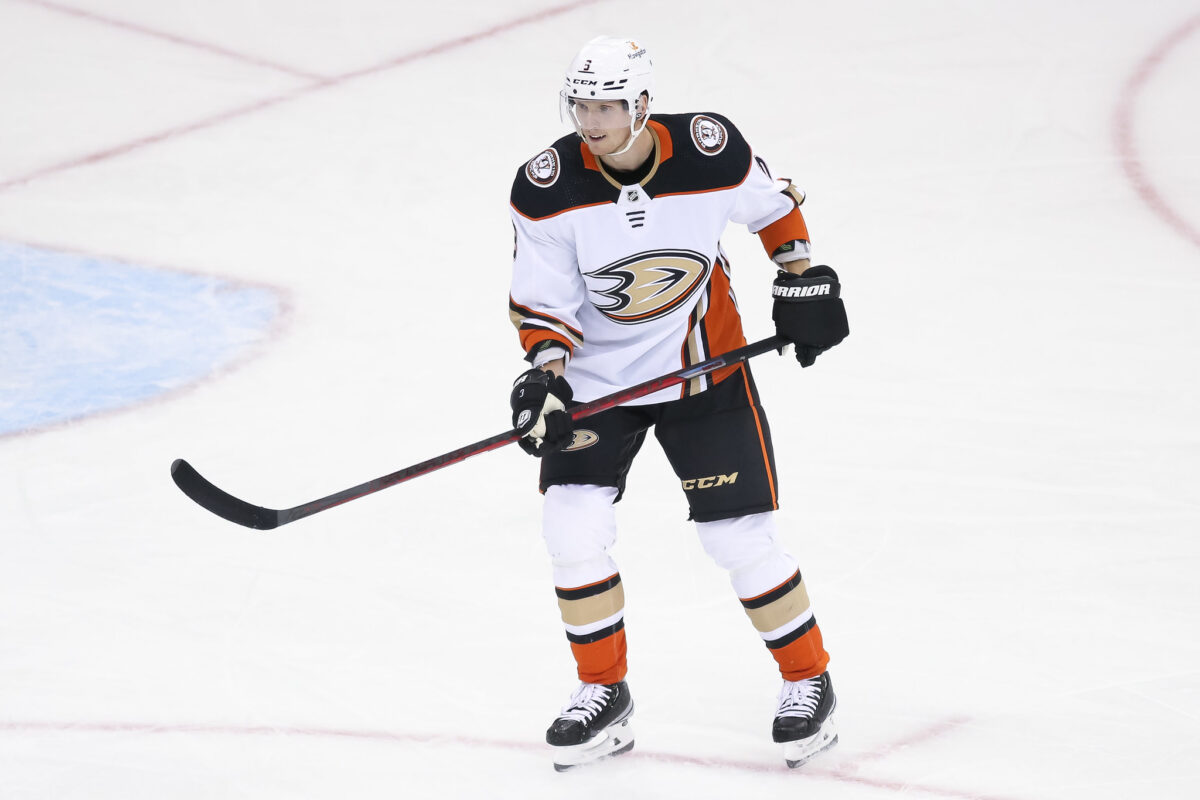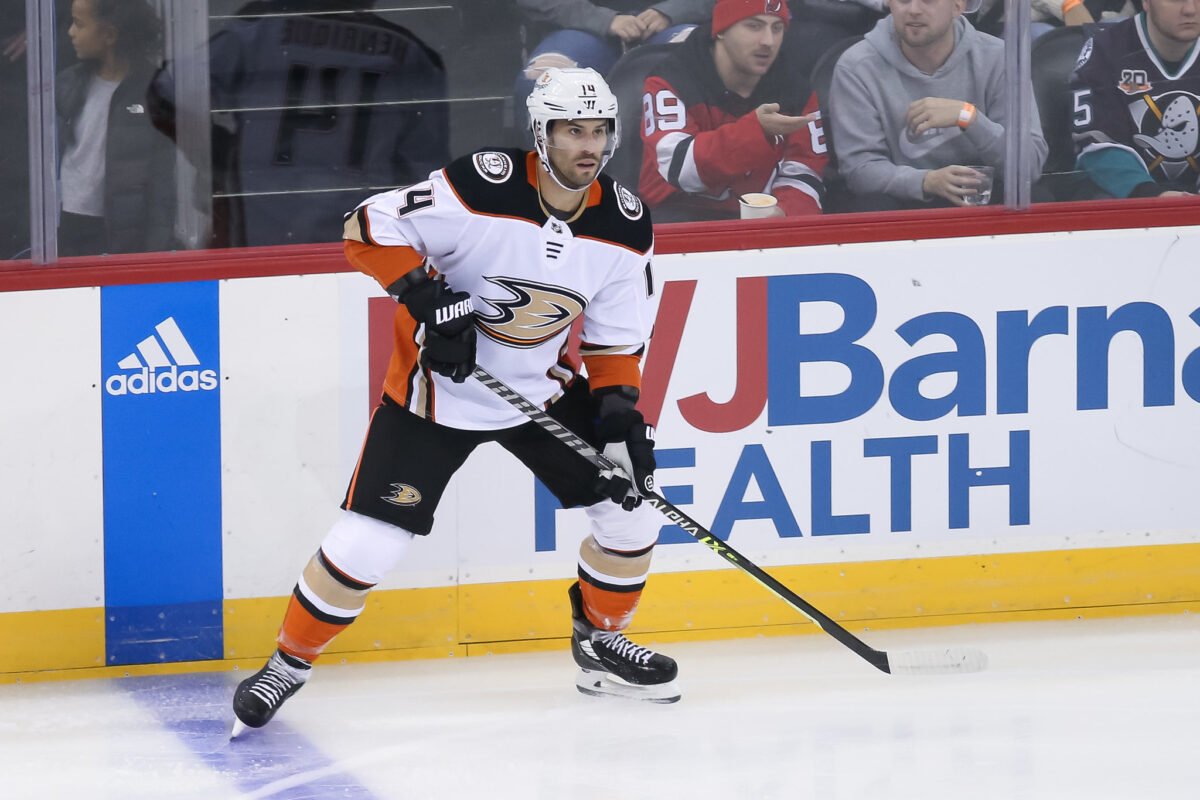It’s no secret that the Anaheim Ducks are approaching the 2023 Trade Deadline as one of the bigger sellers in the NHL. With a 13-29-5 record (31 points), the Ducks are last in the Western Conference, and one of three teams realistically vying for the best odds in the Connor Bedard sweepstakes that is the 2023 NHL Draft Lottery.
Related: 4 Takeaways From Ducks’ Victory Over Blue Jackets
This doesn’t mean the rest of the season is pointless. Sure, these final 35 games may become difficult at times to watch. But with the trade deadline looming, the Ducks have the ability to improve their roster in the long term. Like last year, they have a handful of expiring contracts ready to be traded as rentals for the playoffs. John Klingberg, Kevin Shattenkirk, and Dmitry Kulikov headline a group of veterans set to become unrestricted free agents in the offseason. The Ducks also have pending restricted free agents (RFA), including Max Comtois, potentially available for trade as well.

If last year was any indication, general manager Pat Verbeek would rather trade these players than risk losing them for nothing. Finding the right fit for a deal in a league where most teams are spending to the salary cap is difficult, but it’s made easier by the Ducks’ nearly $14 million in cap space. Here is a look at three teams that may strike a deal with them before the March 3 deadline.
Buffalo Sabres
The Buffalo Sabres are uniquely positioned to spend at the trade deadline. With a record of 23-19-3 (49 points), they only sit five points out of a playoff spot. Fueled by Tage Thompson’s ascension to stardom and several players racking up points at career-high rates, the Sabres are scoring a league-leading 3.80 goals per game. They also lead the league with over $18 million in cap space, which will afford them the chance to spend big to gain ground in the standings. Half of this cap space disappears when extensions for Thompson and Mattias Samuelsson kick in next season, so this is a one-year opportunity for the Sabres to spend big to end their 11-season playoff drought.
The Sabres could look to either add additional scoring threats to the middle of their lineup or bolster their bottom-10 defense. If they wanted a forward, Adam Henrique would be a versatile option. He is a natural center and would instantly improve their third line. He would also be a great option if the Sabres wanted to improve their second line around Dylan Cozens, as he’s spent most of the last two seasons as a winger for young centers Trevor Zegras and Mason McTavish. The only concern for a deal involving Henrique moving to Buffalo would be that he isn’t a true rental. With one more year after this season, his $5.825 million salary could push the Sabres closer to the salary cap than they are comfortable with. Not to mention, the price to acquire him as more than a rental would likely involve draft capital the Sabres would rather utilize themselves.

Defensively, the Sabres have plenty to improve on. Rasmus Dahlin is playing at a Norris-caliber level, and Owen Power appears to be every bit as advertised as the top pick in the 2021 NHL Draft. But depth is an issue, and the Ducks have several blueliners available. Klingberg and Shattenkirk are solid options if Buffalo was looking to improve their second power play unit, though Shattenkirk may be more appropriately priced for the role. Kulikov is also a cheap option to shore up the bottom of the lineup if the Sabres were looking for more reliable defensive options.
New Jersey Devils
Another up-and-coming team in the Eastern Conference, the New Jersey Devils (30-12-4, 64 points) are comfortably in second place in the Metropolitan Division. Like the Sabres, the Devils owe this jump in the standings to breakouts by their young, high-end talent. The Devils don’t have the cap space that the Sabres possess, so trading with them will involve retaining salary or receiving a bloated contract in return. Either way, the Ducks are flush with cap space to make a deal work.
Reuniting Henrique with the Devils would make sense for a few reasons. It would give the 32-year-old a chance to get back into the playoffs, and with the team that drafted him. The Devils would be getting coveted veteran experience ahead of the playoffs, as well as the added scoring threat he brings to the lineup. Even on the lowest-scoring team in the NHL, Henrique’s 28 points are outpacing both Devils’ second-line wingers, Erik Haula and Tomas Tatar. He could reasonably take over the second power play unit duties from Haula as well.
Related: New Jersey Devils Depth Key to 2022-23 Playoff Appearance
In order to make a deal for Henrique, the Devils and Ducks would have to make the numbers work. Damon Severson is New Jersey’s most movable asset, and, with a $4 million cap hit, he would give the Devils some flexibility. As an upcoming unrestricted free agent, and with Luke Hughes and Simon Nemec in the pipeline, Severson’s next contract will likely be with another team. The Devils could opt to trade him for the standard “picks and prospects” deal, but those returns could take years to develop, whereas a deal for a veteran like Henrique would immediately strengthen the lineup as an emerging Cup contender.
The question then comes to what the Ducks would want to do with Severson. At 28 years old, he might be a little too old to factor into Anaheim’s competitive window, and any new deal carrying him into his twilight years could affect the necessary cap space for some of the younger players in the organization. They could simply package him again, and there is historical precedence to being traded multiple times before a single deadline. That being said, Anaheim will have to rebuild the right side of their defense in the offseason, and Severson, an alternate captain in New Jersey, can provide some additional leadership to what projects to be an incredibly young roster, provided that the price is right.
Edmonton Oilers
Ignoring the golden rule of never trading within your own division, the Ducks and the Edmonton Oilers can also make for viable trade partners. The Oilers (27-18-3, 57 points) need to maximize their opportunities with Connor McDavid and Leon Draisaitl on the roster, but they have minimal cap space to work with. They are currently in the top wild card position, but not quite clear of the Calgary Flames and Nashville Predators. If another early playoff exit is a disappointment, then outright missing the playoffs in the middle of the McDavid-Draisaitl era would be unacceptable. In the Ducks, the Oilers would have a trade partner that not only improves their roster but can help on the monetary side to make both teams cap-compliant.
Jesse Puljujarvi has been involved in trade discussions for most of this season. The 23-year-old Finn has been an analytics darling and has been labeled as a hard worker on both ends of the ice. His offensive production, however, has staggered, and even fellow countryman, and Ducks legend, Teemu Selanne is suggesting a change of scenery.

Trading Puljujarvi would free up $3 million in cap space for the Oilers. A one-for-one trade could see Max Comtois heading up to Edmonton in return for Puljujarvi. Both players are pending restricted free agents in their mid-20s and at a crossroads with the teams that drafted them. Comtois has struggled with consistency since leading the team in goals in 2020-21, bouncing up and down the lineup despite being one of the higher-upside players on the roster. With a simple swap, both teams may be going into the offseason with RFAs they’re more eager to strike a deal with, while also giving the Oilers additional scoring depth for their playoff push.
Change Inevitable in Anaheim
With less than 40 days to the deadline, the NHL is still waiting for the first big trade of the season to come through. With plenty of options available for rental, the Ducks could be the team setting the price for the market. What remains certain is that this roster will look different after March 3. Depending on the return from the trades, this will be a much younger version of the Ducks finishing out the season. From a prospect development standpoint, it’s an exciting time in Anaheim while cementing their odds in the draft lottery.
Salary Cap info courtesy of CapFriendly
